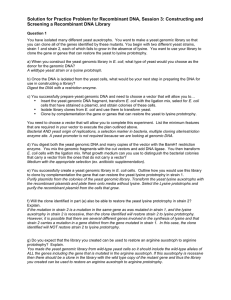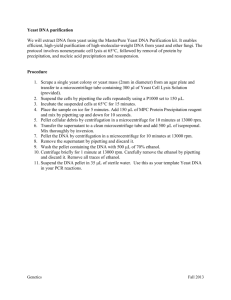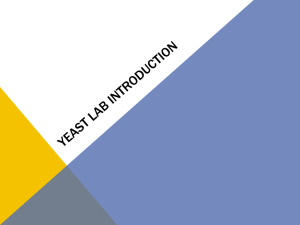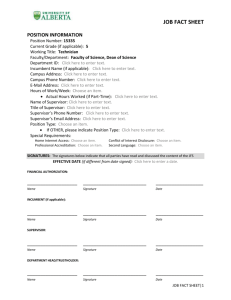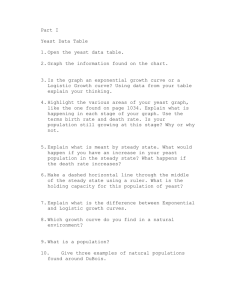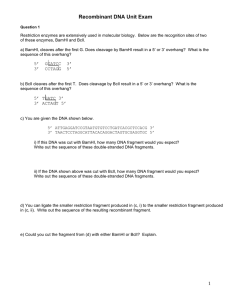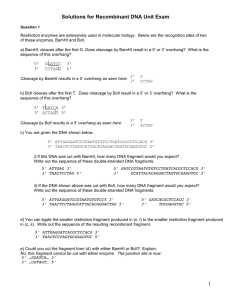Document 13525715
advertisement
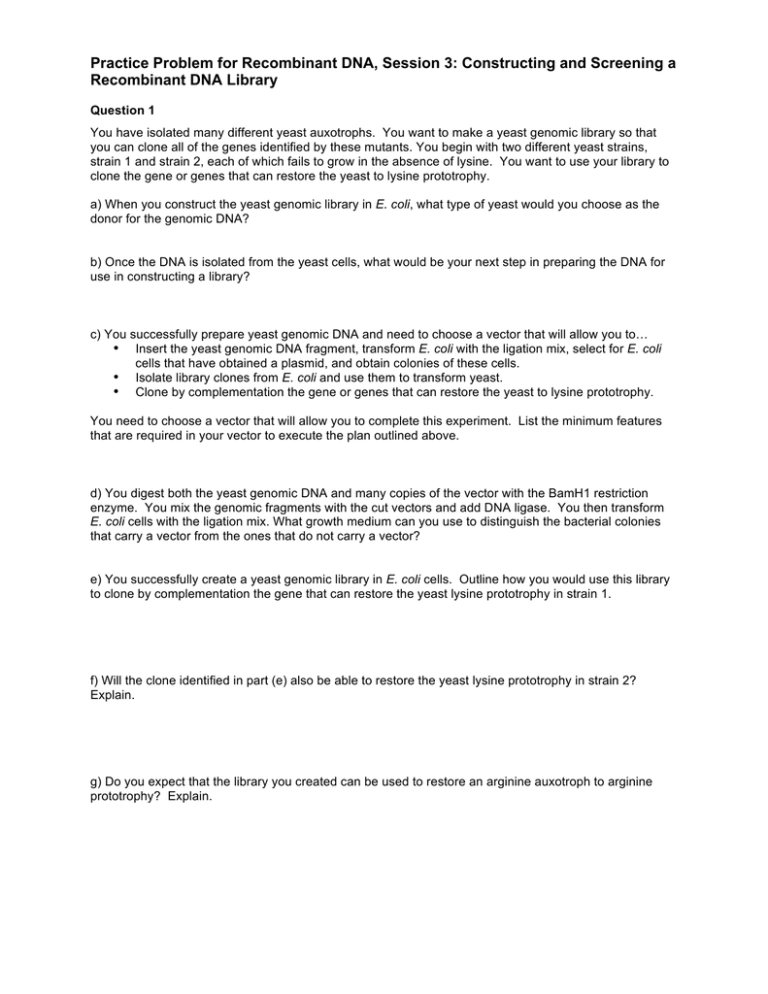
Practice Problem for Recombinant DNA, Session 3: Constructing and Screening a Recombinant DNA Library Question 1 You have isolated many different yeast auxotrophs. You want to make a yeast genomic library so that you can clone all of the genes identified by these mutants. You begin with two different yeast strains, strain 1 and strain 2, each of which fails to grow in the absence of lysine. You want to use your library to clone the gene or genes that can restore the yeast to lysine prototrophy. a) When you construct the yeast genomic library in E. coli, what type of yeast would you choose as the donor for the genomic DNA? b) Once the DNA is isolated from the yeast cells, what would be your next step in preparing the DNA for use in constructing a library? c) You successfully prepare yeast genomic DNA and need to choose a vector that will allow you to… • Insert the yeast genomic DNA fragment, transform E. coli with the ligation mix, select for E. coli cells that have obtained a plasmid, and obtain colonies of these cells. • Isolate library clones from E. coli and use them to transform yeast. • Clone by complementation the gene or genes that can restore the yeast to lysine prototrophy. You need to choose a vector that will allow you to complete this experiment. List the minimum features that are required in your vector to execute the plan outlined above. d) You digest both the yeast genomic DNA and many copies of the vector with the BamH1 restriction enzyme. You mix the genomic fragments with the cut vectors and add DNA ligase. You then transform E. coli cells with the ligation mix. What growth medium can you use to distinguish the bacterial colonies that carry a vector from the ones that do not carry a vector? e) You successfully create a yeast genomic library in E. coli cells. Outline how you would use this library to clone by complementation the gene that can restore the yeast lysine prototrophy in strain 1. f) Will the clone identified in part (e) also be able to restore the yeast lysine prototrophy in strain 2? Explain. g) Do you expect that the library you created can be used to restore an arginine auxotroph to arginine prototrophy? Explain. MIT OpenCourseWare http://ocw.mit.edu 7.01SC Fundamentals of Biology Fall 2011 For information about citing these materials or our Terms of Use, visit: http://ocw.mit.edu/terms.



